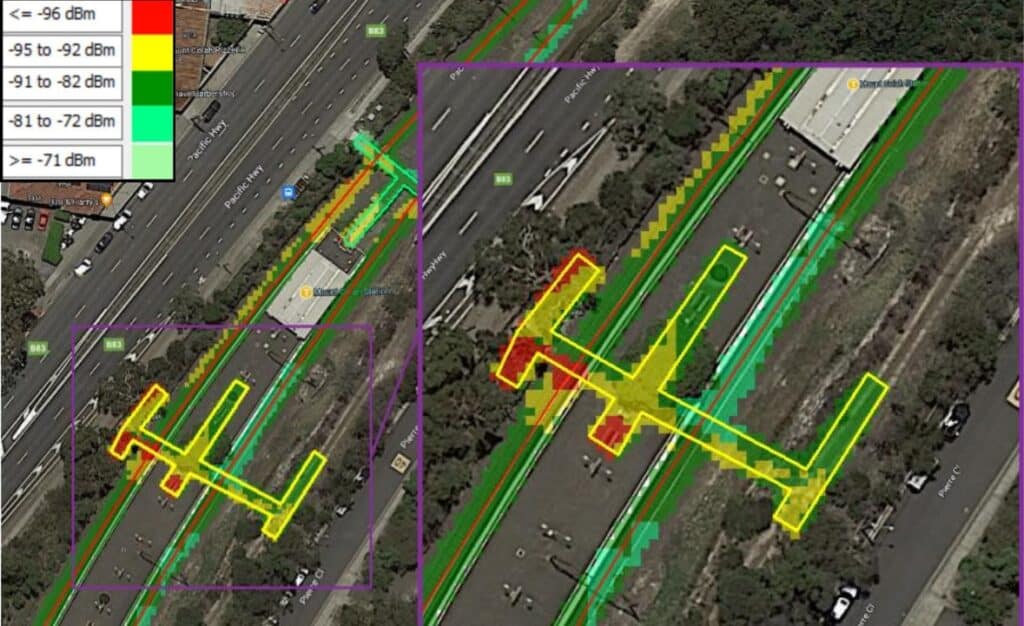Modelling the impact of new structures on network performance is all in a day’s work for ATDI. Sydney Trains commissioned ATDI to evaluate the impact of a new footbridge on the existing DTRS coverage throughout the railway corridor in the North Line, Sydney and establish mitigation measures.
The team created a baseline simulation to establish a comparable model with the current signal levels. This showed the alternating servers along the line with the competing signals triggering handover protocols around the new footbridge/station. When the new bridge was added to the simulation, changes were made to the surrounding clutter and measurements supplied by Sydney trains were added to show the signal shadowing and estimated signal loss. The impact of the new bridge showed reception levels barely met the -95 dBm minimum requirement. Further signal degradation came from the trees on the north side of the new bridge.
When comparing the before and after models, it was clear that the already competing signals faced further handover issues from the new bridge. This issue was worse for slow-moving or stationary trains on the upline, resulting in dropped calls.


Once the simulations were complete, ATDI proposed several mitigations to improve overall coverage and reduce dropped calls. The team recommended making one sector the dominant area by adding a new base station or a low-power repeater close to the station. Any changes to antenna orientation and tilt were ruled out, as they failed to make any noticeable improvements.
For more information about radio performance analysis due to obstacles in the target areas with HTZ, contact us today.



